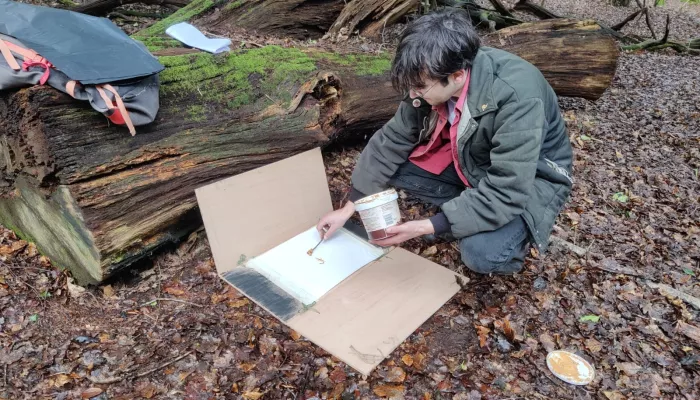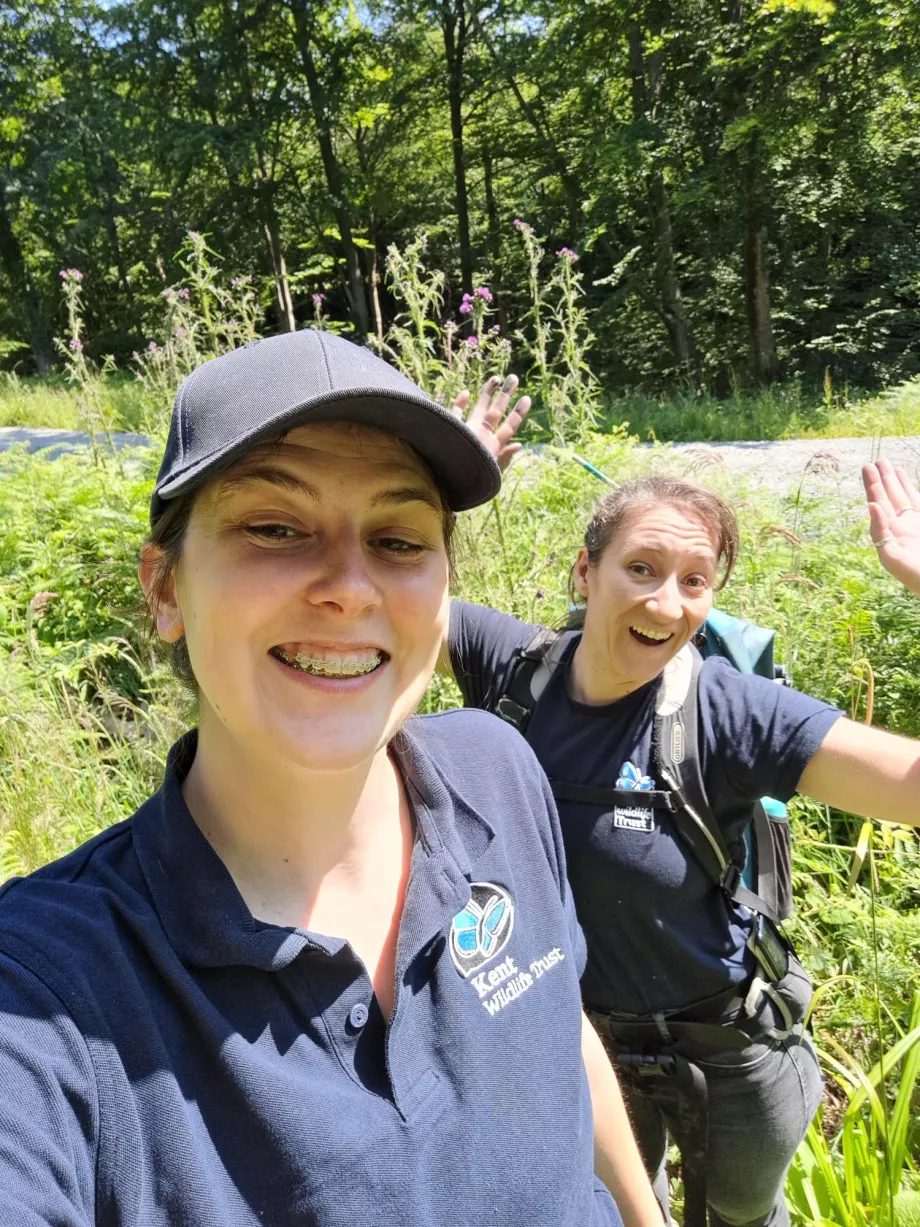Last week, I met Amy Fitzmuarice (Project co-manager) and one of our lovely volunteers Doug at the Rother Woods.
Each week we attend to different pieces of equipment. Friday's task was to collect the Audiomoth devices which have been deployed in their locations for 5 weeks. At each point there are 2 devices, one capturing bat sounds and once capturing bird sounds.
The field data is recorded in Mergin Maps, a handy app that captures the GPS location and details of the device deployment such as canopy cover, habitat and details from each of the checks.







